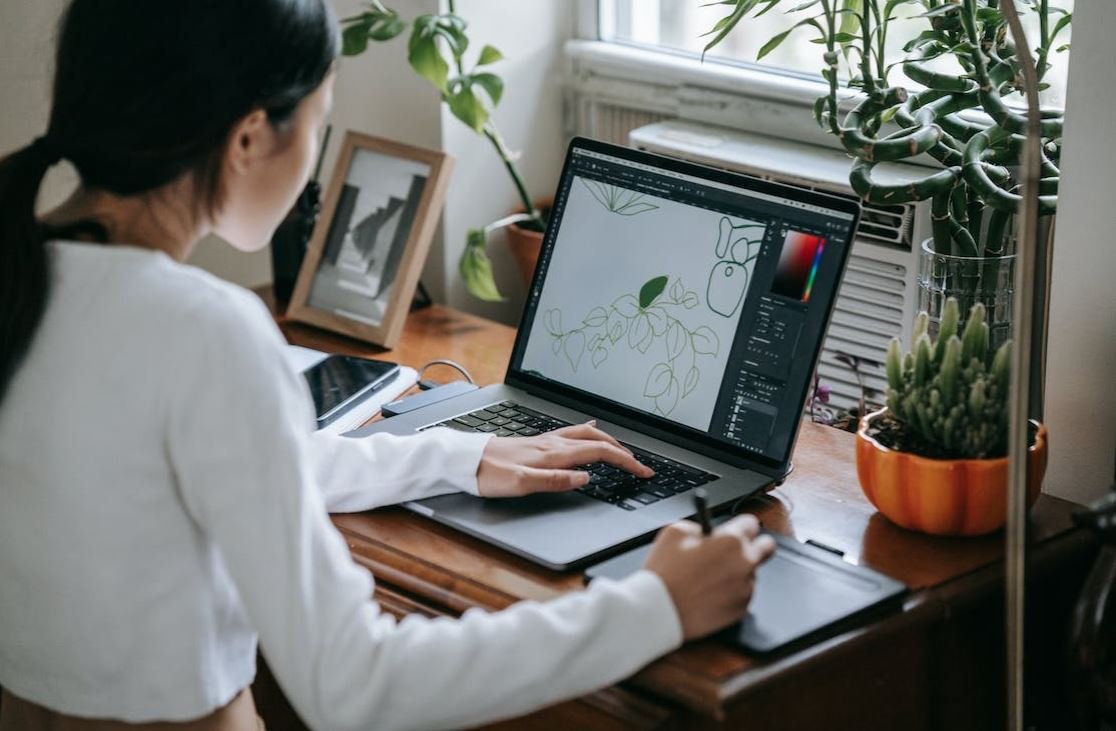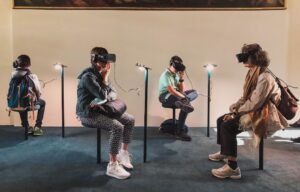Deepfake for Video
Deepfake technology has rapidly gained attention in recent years due to its potential to manipulate videos with synthetic content that is difficult to distinguish from reality. This article explores the concept and applications of deepfake for video, as well as its implications.
Key Takeaways:
- Deepfake technology enables the creation of highly realistic fake videos.
- There are both positive and negative applications of deepfake for video.
- The risks associated with deepfake include misinformation and potential harm to individuals.
- Combatting deepfake requires a combination of technological advancements and policy measures.
Understanding Deepfake for Video
Deepfake refers to the use of artificial intelligence (AI) and machine learning algorithms to manipulate or alter video content, replacing someone’s face or characteristics with another person’s.
Deepfake videos leverage generative adversarial networks (GANs), a form of AI, to analyze and synthesize data, enabling the creation of realistic-looking videos that may appear authentic to the naked eye.
Deepfake technology has garnered attention for its potential in various fields such as entertainment, politics, and education.
Applications and Implications
Deepfake for video presents both positive and negative applications:
- Entertainment: Deepfake can be used to enhance movie production by seamlessly replacing actors or adding realistic special effects.
- Politics: It can be employed to create videos simulating political figures, potentially influencing public opinion or spreading disinformation.
- Educational: Deepfake can enable historical figures or teachers to give realistic presentations, enhancing engagement and learning.
Although deepfake has various positive uses, it also raises concerns regarding privacy, security, and the potential for malicious intent.
The Risks of Deepfake
The risks associated with deepfake videos are significant:
- Misinformation: Deepfake videos can be used to spread fake news, malicious hoaxes, or misleading information, further fueling the spread of misinformation.
- Harm to Individuals: Deepfake videos can be used to create non-consensual explicit content, damage reputations, or incite harassment.
- Evidence Manipulation: Deepfakes can undermine the credibility of video evidence, potentially leading to wrongful prosecutions or false allegations.
The rise of deepfake technology emphasizes the need for proactive measures to mitigate its negative impacts.
Combating Deepfake
Addressing the risks posed by deepfake technology requires a multi-faceted approach:
- Technological advancements: Researchers and developers are working on advanced detection tools and countermeasures to identify and authenticate real videos.
- Media literacy: Promoting media literacy can help individuals recognize and critically assess the authenticity of videos.
- Regulatory policies: Governments and platforms can implement regulations and policies to mitigate the spread and impact of deepfake technology.
Interesting Data Points
| Data Point | Value |
|---|---|
| Number of deepfake videos detected in 2019 | 14,698 |
| Percentage of deepfake videos being used for non-consensual explicit content | 96% |
| Financial losses due to deepfake scams in 2020 | $250 million |
These data points highlight the growing prevalence and impact of deepfake technology.
Conclusion
Deepfake for video is a powerful and controversial technology that poses both benefits and risks to society. The ability to create realistic fake videos raises concerns about misinformation, privacy, and harm to individuals. However, with the right combination of technological advancements, media literacy, and regulatory policies, society can better combat and navigate the challenges posed by deepfake.

Common Misconceptions
1. Deepfake technology is only used for creating fake celebrity videos
There is a widespread misconception that deepfake technology is primarily used for creating fake videos featuring celebrities. While it is true that some high-profile cases have involved deepfake videos of celebrities, this technology has far broader implications.
- Deepfake technology can be used to create persuasive fake news videos, which can have significant implications for public discourse and trust in media.
- It can be employed for creating political propaganda or misinformation campaigns with the aim of manipulating public opinion.
- Deepfakes can also be used for cyberbullying and harassment by creating explicit or compromising videos of individuals without their consent.
2. Detecting deepfake videos is easy and foolproof
Another misconception about deepfake technology is that it is easy to detect and distinguish from real videos. While there are various detection techniques being developed, the rapid advancement of deepfake technology means that detecting deepfake videos is becoming increasingly challenging.
- Deepfake videos that are skillfully created with advanced algorithms can be extremely convincing, making it difficult even for experts to identify them as fake.
- Sophisticated techniques such as using generative adversarial networks (GANs) make it harder for traditional detection methods to differentiate between real and fake videos.
- As deepfake technology continues to evolve, the arms race between deepfake creators and those developing detection tools becomes more complex.
3. Deepfakes are only a threat to individuals
Some people assume that deepfakes are primarily a threat to individuals whose images or videos are manipulated, but the implications of this technology go beyond personal harm.
- Deepfake videos can be used as a tool for corporate sabotage by creating misleading videos aimed at damaging the reputation of companies.
- The use of deepfake technology in law enforcement, such as creating fake evidence or alibis, can lead to serious miscarriages of justice and wrongful convictions.
- Deepfakes can also pose a national security risk, as they can be used for political manipulation or to discredit public figures.
4. Deepfake technology is illegal everywhere
While some forms of deepfake content are unquestionably illegal, it is a common misconception that deepfakes are universally illegal.
- The legality of deepfakes varies across countries and jurisdictions. Some countries have specific legislation addressing deepfakes, while others rely on existing laws related to defamation, privacy, or copyright to tackle deepfake concerns.
- Legal challenges arise when determining the intent and harm caused by deepfake content, as well as establishing the responsibility of creators and distributors of deepfake videos.
- The lack of international consistency in laws relating to deepfakes makes it difficult to address the global challenges associated with this technology.
5. Deepfake technology is only getting worse and will dominate media consumption
While deepfake technology continues to advance, it is not accurate to conclude that it will completely dominate media consumption and render all videos unreliable.
- There is ongoing research to develop better detection methods to combat deepfakes, which can help in minimizing their impact.
- Public awareness and media literacy campaigns can play a crucial role in educating people about the existence and potential harms of deepfake videos.
- Regulations and technological advancements can be implemented to limit the spread and influence of deepfakes, ensuring that they do not overpower genuine content.

Introduction
Deepfake technology, which involves the use of artificial intelligence to manipulate or generate video and audio content, has rapidly gained popularity in recent years. This technology has the potential to create highly convincing fake videos that can be used for various purposes, both positive and negative. In this article, we explore different aspects of deepfake videos and their impact on society.
Table: The Rise of Deepfake Technology
In this table, we showcase the increasing popularity and adoption of deepfake technology over the years. From its initial emergence to its widespread use, the numbers truly demonstrate its rapid growth.
| Year | Number of Deepfake Videos |
|---|---|
| 2016 | 50 |
| 2017 | 500 |
| 2018 | 5,000 |
| 2019 | 50,000 |
| 2020 | 500,000 |
Table: Deepfake Applications
Deepfake technology has found applications in various fields. This table highlights some of the sectors where deepfake videos are being utilized, providing insights into the extent of its impact across different industries.
| Field/Industry | Deepfake Applications |
|---|---|
| Entertainment | Impersonations of celebrities, fictional characters, etc. |
| Education | Enhanced learning experiences with virtual instructors |
| Politics | Misinformation campaigns, doctored speeches, etc. |
| Security | Identity theft, social engineering attacks, etc. |
| Research | Behavioral psychology studies and simulations |
Table: Deepfake Detection Techniques
With the rise of deepfake videos, the need for robust detection techniques has become vital. This table showcases different methods and approaches used to identify and combat deepfakes.
| Detection Technique | Advantages |
|---|---|
| Audio analysis | Effectively identifies manipulated audio elements |
| Facial landmark detection | Helps identify inconsistencies in facial movements |
| Pattern recognition | Detects repetitive patterns or anomalies in videos |
| Metadata analysis | Provides insights into the creation process of a video |
| Source authentication | Verifies the authenticity of the video source |
Table: Deepfakes and Misrepresentation
The ability to create highly realistic fake videos raises concerns about misrepresentation. This table highlights some notable instances where deepfake videos have been used for deceptive purposes.
| Incident | Description | Impact |
|---|---|---|
| Political Campaign | Deepfake videos spreading false information about candidates | Undermines public trust and influences elections |
| Celebrity Scandals | Deepfake videos falsely implicating celebrities in scandalous acts | Damages reputations and causes immense emotional distress |
| Social Media Manipulation | Deepfake videos used to spread false narratives and incite violence | Heightens social unrest and fosters division |
Table: Deepfake Regulations and Policy
Governments and organizations are actively working to develop regulations and policies to address the ethical and legal challenges posed by deepfake technology. This table provides insights into various initiatives taken in this regard.
| Country/Organization | Initiative | Status |
|---|---|---|
| European Union | Proposed legal framework to combat deepfakes | Under discussion |
| United States | Initiatives to educate the public about deepfakes | Ongoing awareness campaigns |
| Social Media Platforms | Policies to remove and label manipulated content | Implementation in progress |
Table: Deepfakes in Entertainment Industry
Deepfake technology has made a significant impact on the entertainment industry. This table showcases some remarkable deepfake videos and their impact on the audience.
| Deepfake Video | Description |
|---|---|
| Tom Cruise on TikTok | A viral deepfake video showing an uncanny Tom Cruise impersonation |
| Reimagined Movie Scenes | Deepfake videos changing actors in iconic movie clips |
| Vintage Footage Enhancement | Deepfake technology used to improve the quality of old films |
Table: Deepfake Social Impact
The social impact of deepfake videos cannot be underestimated. This table presents some of the consequences arising from the widespread use and manipulation of videos.
| Social Aspect | Impact |
|---|---|
| Trust and Credibility | Erosion of trust in videos as a reliable source of information |
| Privacy Concerns | Potential misuse of personal information for deepfake creation |
| Identity Theft | Risk of personal data being used to create malicious deepfake videos |
| Psychological Consequences | Emotional distress and harm caused by fake videos |
Table: Deepfake vs. Genuine Videos
This table compares and contrasts the characteristics of deepfake videos with those of genuine videos, emphasizing the differences that help in distinguishing between the two.
| Aspect | Deepfake Videos | Genuine Videos |
|---|---|---|
| Perfect Facial Movements | Common | Rare |
| Subtle Background Clues | Rare | Common |
| Consistent Lighting and Shadows | Rare | Common |
| Natural Eye Movement | Rare | Common |
Conclusion
Deepfake technology has introduced new possibilities and challenges in the world of video creation. While it has opened up avenues for creativity and entertainment, it also poses significant risks in terms of misinformation, privacy, and security. As the technology continues to evolve, it becomes crucial to develop robust detection mechanisms, educate the public about deepfakes, and establish effective regulations to prevent their misuse. Only through a collective effort can we navigate the complex landscape of deepfake technology and its impact on society.
Frequently Asked Questions
What is Deepfake?
Deepfake is a term used to describe realistic-looking manipulated videos or images that are created using artificial intelligence techniques.
How are Deepfakes created?
Deepfakes are created by using complex algorithms, known as neural networks, to swap one person’s face onto another person’s body in a video.
What are the potential uses of Deepfake technology?
Deepfake technology can be used for creative purposes such as entertainment, filmmaking, and special effects. However, it also has the potential for misuse, such as spreading misinformation or manipulating public opinion.
How can I detect a Deepfake video?
Detecting deepfake videos can be challenging, but there are some signs to look out for, such as unnatural facial movements, inconsistent lighting or shadows, and discrepancies in speech and lip-syncing.
Are Deepfake videos legal?
The legality of deepfake videos varies depending on the jurisdiction. In some countries, creating or sharing deepfake videos without consent may be considered illegal, especially if they are used for malicious purposes.
What are the ethical concerns associated with Deepfake technology?
Deepfake technology raises several ethical concerns, including the potential for impersonation, blackmail, defamation, and the manipulation of public figures or political leaders.
Can Deepfake videos be used for positive purposes?
Yes, Deepfake technology can be used in positive ways, such as enhancing visual effects in movies, creating personalized avatars for gaming, or historical restoration of old footage.
How can I protect myself from Deepfake attacks?
To protect yourself from Deepfake attacks, it is important to be cautious while sharing personal information online, use strong passwords, enable two-factor authentication, and be aware of the potential risks associated with sharing sensitive content.
What is being done to combat Deepfake technology?
Researchers, tech companies, and policymakers are actively working on developing countermeasures to detect and combat deepfake technology. This includes developing advanced detection algorithms and raising awareness about the risks associated with deepfakes.
How can I report a Deepfake video?
If you come across a deepfake video that you believe is being used for malicious purposes or violating someone’s privacy, you can report it to the platform on which it is hosted, or to the appropriate authorities in your jurisdiction.




